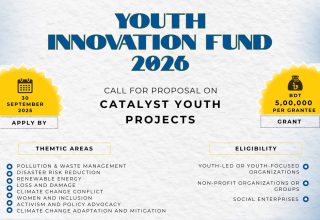Bangladesh has been experiencing rapid growth in urban population for the last few decades. This growth follows an imbalanced spatial distribution, mostly directed towards Dhaka- the capital city. More than 60 percent of Bangladesh’s urban population is concentrated in four major cities: Dhaka, Chittagong, Khulna, and Rajshahi. By 2035, nearly 110 million people are expected to inhabit urban areas in the country, constituting about half of its total population. Migration from rural climate-stricken areas to urban-developed areas is common. Better Economic factors and public facilities in the cities contribute toward rural-urban migration. Additionally, climatic events including flood, cyclone, riverbank erosion, saline water intrusion and drought, are key drivers contributing to migration into major cities. The growth of informal settlements, housing development projects, and associated infrastructure construction are occurring at the cost of loss (or degradation) of natural resources, thereby affecting residents’ wellbeing.
The Full Urban Proceeding Here [PDF]Home Publications Event Report Fourth Annual National Conference on Urban Resilience to Climate Change
-
Event Report | Project Inception Meeting and Stakeholder Mapping Synopsis
This publication provides a summary of discussions from the Inception and Stakeholder Meet… -
Event Report | South-South Collaboration on Addressing Loss and Damage
As climate change intensifies, countries in the Global South are experiencing disproportio… -
Event Report | South Asia Resilience Hub- COP28
This report is the comprehensive session discussion on the South Asia Regional Resilience … -
Event Report | Roundtable on Climate Change in the Build Up to the COP28 with the United Arab Emirates
This publication briefly includes the discussion from the Roundtable on Climate Change in … -
INTRODUCTORY MEETING OF THE NATIONAL PLATFORM ON LOCALLY-LED ADAPTATION (NPLLA)
MESSAGES FOR COP 27This Publication Briefly Includes The Discussion From The National Platform On Locally Led… -
Event Report | First Annual National Conference on Locally-led Adaptation (LLA)
ICCCAD, with the support of IIED and FCDO organized a two-day consultation on Locally-led …
Load More Related Articles
-
Call for Proposal | ICCCAD Youth Innovation Fund 2026 (Sponsoring Green Idea/Campaign)
The Youth Innovation Fund – Sponsoring Green Idea-Campaign is a small-grant initiative tha… -
Call for Proposal | ICCCAD Youth Innovation Fund 2026 (Catalyst Youth Project)
The Youth Innovation Fund – Catalyst Youth Project is a small-grant initiative designed to… -
Roundtable Dialogue on Climate Change Impacts in the Ready-Made Garment (RMG) Sector
Acknowledgement: The International Centre for Climate Change and Development (ICCCAD) exte… -
Call for Application | ICCCAD Youth Fellowship Programme 2026
Youth are the driving force toward a climate-resilient future. They are the leading advoca… -
Magazine | Displaced by Climate: The Human Cost
INFLUENCERS, one of the winners of the ICCCAD Youth Innovation Fund 2024, has developed a … -
Our women farmers are ready to lead
It’s time we help them by listening to their needs
In a small village in Botiaghata, Khulna, Sanchita Bishwas described with pride the plots …
Load More By Content Manager
-
Roundtable Dialogue on Climate Change Impacts in the Ready-Made Garment (RMG) Sector
Acknowledgement: The International Centre for Climate Change and Development (ICCCAD) exte… -
Developing a Climate Change Training Module for the Ready-Made Garment Sector Workers | Roundtable Dialogue Report
The Roundtable Dialogue on “Developing a Climate Change Training Module for the ready-made… -
The 4th Annual Gobeshona Global Conference Learning Report
This learning report is based upon the sessions of the 4th annual Gobeshona Global Confere… -
Event Report | Project Inception Meeting and Stakeholder Mapping Synopsis
This publication provides a summary of discussions from the Inception and Stakeholder Meet… -
Event Report | South-South Collaboration on Addressing Loss and Damage
As climate change intensifies, countries in the Global South are experiencing disproportio… -
Event Report | CLIMB Innovation Scaling and National Level LLA Consultation
The consultation of CARE’s CLIMB project on locally led adaptation was led by ICCCAD…
Load More In Event Report
Check Also
Roundtable Dialogue on Climate Change Impacts in the Ready-Made Garment (RMG) Sector
Acknowledgement: The International Centre for Climate Change and Development (ICCCAD) exte…



















